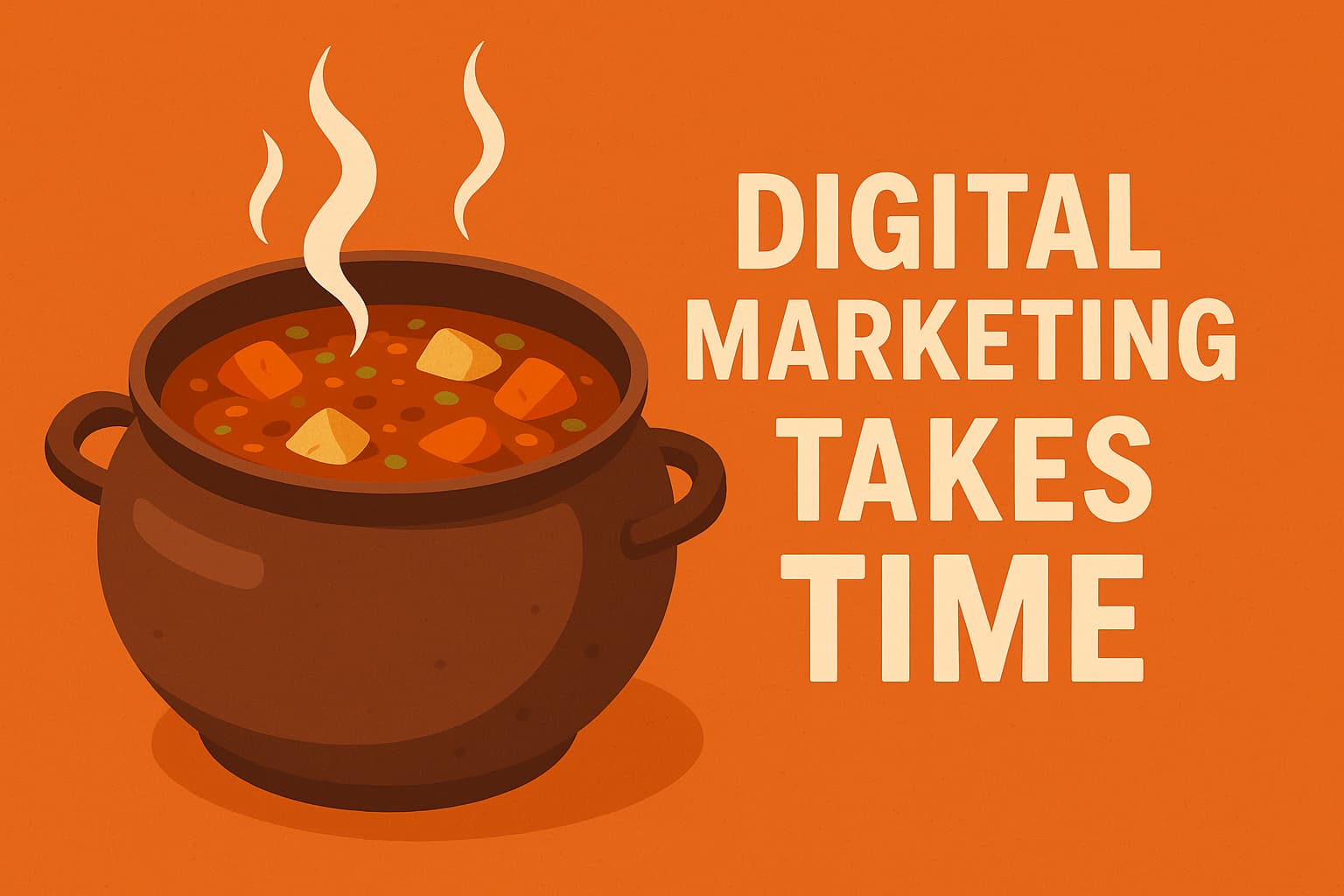You’re expanding. That’s great — and a sign of a healthy, growing business. Getting word out is a priority, but what makes the most sense? How can I begin to show up online in this new market, and how can I begin to generate new leads and business here? Is it as simple as putting up ads, billboards, and getting an office or should more be considered? Should I be thinking digitally or more traditional mediums? This is a question we often get asked by our clients. Opening a new office in itself is challenging but that’s really only half the battle – getting eyes on your new business and being visible locally is of the utmost importance.
In this article we’ll take an in-depth look into a sequential digital marketing approach to opening a new business location in a new city or country and how best to set yourself up for success.
1. Get A New Google My Business profile.
This is step #1, as there is a process to it that will take time. As soon as you have a local address in your new market, create a new business listing, and attempt to confirm it with Google. It’s likely that you will have to wait until a postcard is sent to your new business address in order to actually be live on Google. The postcard can take up to two-weeks, so prioritizing this step is very important.
Consider creating a Business Group in your Google My Business account for all your business properties using the same name. This will be a simpler way of organizing your business properties under one hub, and allows you to edit en-masse as needed.
Fill-out the profile as much as possible, and add images, descriptions, business info, hours of operation and more. Once Google verifies your listing, you will be able to add a ton more information, including internal and external photos of your business, and even video.
Reviews should be of the utmost importance once your profiles are live. This simple act will legitimize your business and begin to improve your chances of being shown for key terms and for relevant business searches in the area. It also establishes to the public that you’re in business and working with local clients.
2. Get a Listing on Bing Maps
Similar to Google’s mapping process, you should create a Bing Maps listing using Bing Places. They often have to send you a postcard as well, so the sooner you can set this up the better. If by chance your Google listing is verified you can also import this information into Bing.
Bing has less than 10% market share in Canada, but is still used, and should definitely be on your radar when opening a new business as any online listing is better than nothing. Fill out this listing as complete as you can, and once verified fill-in as much as you can to ensure your listing is complete.
3. Add Posts On Your Listing(s)
Take this opportunity to familiarize yourself with adding posts to your GMB account. You should be adding a post announcing your new location on your Google My Business for your home-base, and also for your new location. Google is using these posts more and more for helping business climb organic listing, and be noticed locally. Take advantage.
4. Make Some Website Changes
Now’s its time to change up your website. The question becomes, to what extend. Should you be making a completely separate website entity? Or just editing your contact information and be done with it? The best answer here ultimately depends entirely on what you’re trying to achieve with this new business. If it’s basically an expansion, but you offer the same services in a new market, a whole new website isn’t required. If this new expansion will be offering only slightly different services, but will retain the brand, it may be wise to start building specific location pages. If this new entity will be owned by your parent business, but ultimately offer completely different services/branding, a new website is likely the recommended approach.
Let’s assume for our sake, the businesses and brands will stay the same. Here’s what we would recommend you edit.
- Add to your Contact Page or your Locations Page and add in your new business details, contact information and maps
- Write a blog post announcing the new location
- Build a landing page with the location name in the URL that has all the services and unique benefits of this property, plus a contact form. This will then be used for ads, but also make it indexable by search engine bots.
5. Leverage Google Analytics
Google Analytics is an important tool in your new business venture as it will give you insight into how successful you are at getting visibility for you new property and if people are hearing about you. We recommend you set up the following in order to track page performance.
- Set up an alert and track page visitation trends on any content related to your new property (blog post, landing page etc.)
- Build a remarketing audience list for any visitors from around that geographical area, and include any people who have visited your new landing pages – this will be used later.
6. Never Forget: Search Engine Optimization
Being visible is incredibly important, but unlike ads, some of those activities take some time to achieve. Search Engine Optimization activities would be considered by many as playing the ‘long-game’ – but they are very important in driving a constant source of free traffic and leads over time. Here’s what we recommend to get started:
- Identify free listing opportunities in your market and get your website profile listed. There are many out there unique to specific industries, which we would recommend, but most importantly establish profiles on Yellowpages.ca & Yelp. Apple Maps uses YellowPages to populate their maps which are used by most iPhone users, so this is an important step.
- Add Local Business Structured Data to your website script. This step is a little technical, but most web companies can help you add this snippet of code to your website for additional visibility with search engines.
- Reach out to local online newspapers, or business papers and see if you can get an article or advertorial promoting your new business on their websites.
- Your landing page should also try to use relevant terms and city terms in addition to your main services for improved search engine efficiency, so be sure to do this important step.
7. Social Media Changes
Is this the time to make a whole new Facebook page and Instagram profile for this new business? Probably not. The amount of work it will take to build and establish the profile is likely best spent elsewhere to promote and build your business. Unless this is an established business, with its own unique company culture, clients, services and goals that really needs to differentiate itself – you would likely be just fine with adding your secondary location to your main profiles and leveraging and sharing the content your main social media hub posts.
Facebook Locations specifically allows you to post multiple business addresses on your page, and these locations can also be used to collect store visits data conversions and improve your advertising performance.
8. Quick Advice For Digital Advertising
First and foremost, understanding that SEO (search engine optimization) is playing the organic role in your exposure, it’s also helpful to get an extra listing for relevant keywords through Google Search ads. I would recommend Smart Campaigns to start, as they can be location specific. I would also build a regular search campaign and only add in your new location as an ad extension. This combo approach gets you the must needed exposure/awareness you want to a very targeted audience, but also helps you collect data on those searches to identify keyword trends used in the your local marketplace that can later be used for your website content and blog posts.
This is also where you can begin to leverage the remarketing lists you made on Google Analytics. If you can build some display ads using your branding, this would be an important time to target your remarketing lists aggressively with ads driving local customers to get in touch.
Facebook & Instagram ads should also be considered at this phase of the game to help generate awareness. You can leverage the ability of these ads to track store visits (if applicable), generate leads, and make business connections to further grow your business in this new market.
A very important addition to this is to make sure you develop and establish some sort of conversion metrics to track. This will help you optimize your campaign for your preferred conversions over time.
9. E-Newsletter Campaigns Build Business
As you begin to develop connections and business contacts, it may be worthwhile to develop an e-newsletter list of local contacts for your own e-newsletter content that is hyper relevant to your location. This list would likely grow over time, but identify creative ways to build this list should also be on your radar. Think about providing whitepapers, actionable data reports, or promotional offers in order to drive interest and in exchange for sign-ups.
In Conclusion
And that about covers it. There are no doubt other activities to consider based on your unique industry and line of business, but we hope this general overview should help guide you in your new business expansion endeavours.
Good luck!
Recent Posts
Harnessing Google Tag Manager for Better User Insights and Performance Tracking
Unlocking the Power of Google Tag Manager: Simplifying Tracking and Understanding User Behavior Hey there, fellow business owners! If you’re navigating the digital...
AI Max: Transform Your Google Search Ads Strategy Today
Unleashing the Power of AI with Google Ads’ New AI Max Hey there, fellow business owners! If you’re anything like us at Strong...
Patience and Strategy: The True Path to Digital Marketing Success
Let’s get one thing straight: if you think digital marketing is a magic wand that will instantly turn your business into a money-making...


